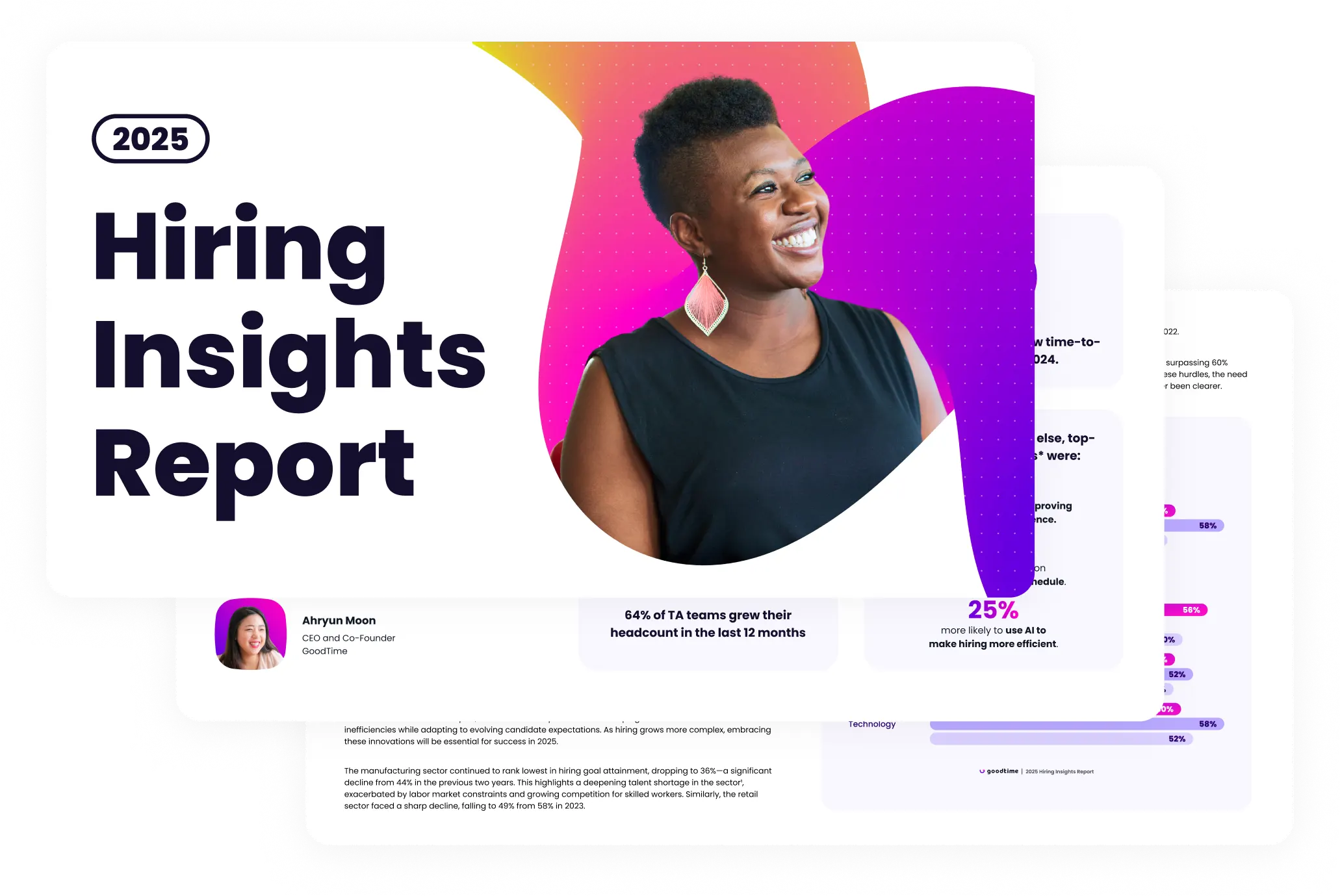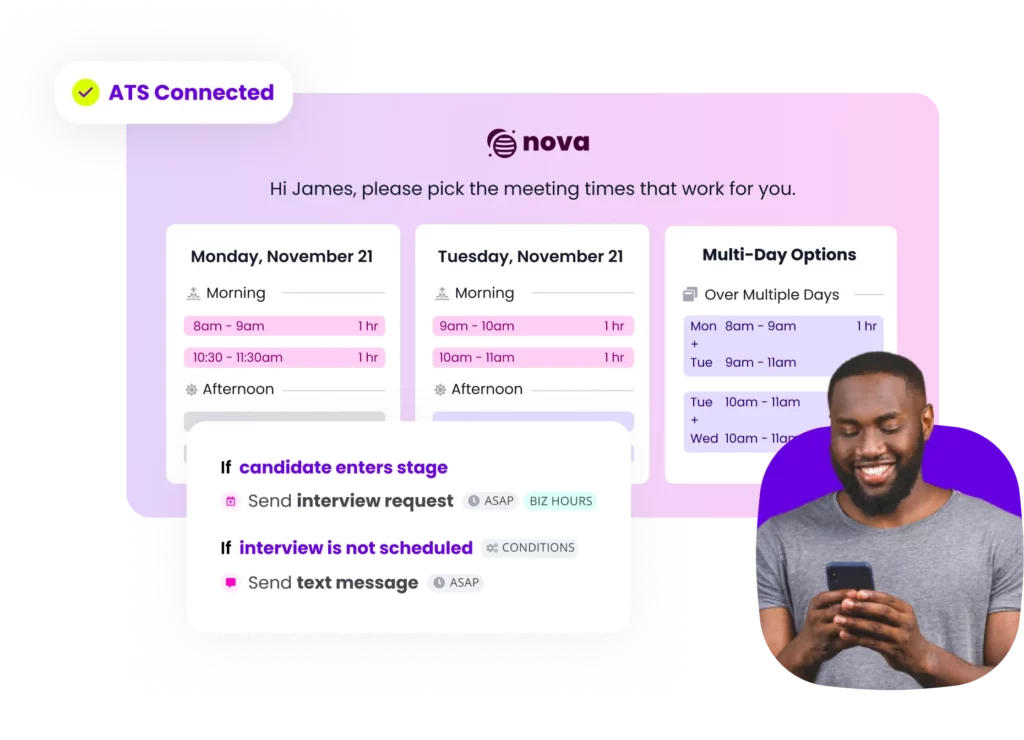A “war for talent” happens when companies compete for a limited supply of workers, perhaps because of a skills shortage or demographic changes. McKinsey’s Steven Hankin coined this term in 1997, and it’s a critical concept in recruitment circles for several reasons.
If your organization struggles to attract and retain talent in a competitive market, you can’t fill job roles. Simple. That might lead to a drop in performance, profitability, and productivity.
The talent war is real in 2025. Many industries, including tech and healthcare, face a shortage of workers, and there aren’t enough skilled candidates to go around.
Below, get insights from vetted experts about how to win the war on talent in 2025 and beyond.

Unlock 2025’s top hiring strategies: Insights from 500+ TA leaders
Be the first to uncover deep hiring insights specific to your sector — straight from the highest-performing TA teams.

Why talent retention is the biggest challenge
According to our Hiring Insights Report, talent retention was the top hiring challenge of the previous year, cited by 34% of talent acquisition (TA) leaders. The next three biggest obstacles were remote work compensation expectations (24%), unrealistic compensation expectations (24%), and a lack of qualified candidates (24%).
A high turnover can have several ramifications for your company. First, you’ll need to find new hires to replace old ones, which can be costly. Staff shortages also increase workloads for other employees, decreasing morale.
Our report reveals that all sectors found it hard to retain top talent in the previous 12 months, with retail, technology, and financial services the hardest hit.
Strategies for winning the war for talent
Attracting new talent and retaining existing talent is the best way to win the talent war.
Attracting talent
Employer branding
Your organization’s personality, mission, values, and company culture make up your employer branding, which is the image you portray as a recruiter. Advertising these attributes can help you communicate a positive message to job seekers and convince them to apply for a position at your company. For example, if your organization wants to make a change in the world, you should reflect this mission in your recruitment materials, careers page, and other touchpoints with potential candidates.
When you develop a strong employer brand, people might be more excited to work with your team. You can also reduce time to hire because candidates are more likely to accept job offers from companies with positive reputations.
Offer competitive salaries
Advertising jobs with competitive salaries can encourage top talent to apply for these roles, leaving you with a highly skilled workforce. Not every company can afford to do this, of course. However, raising salaries to match or exceed the industry average can attract more people to your organization.
Whatever you do, be honest about pay. Research shows that 82% of U.S. workers are more likely to consider applying for a role if the job posting includes salary details. Moreover, 73% are more likely to trust companies that provide pay ranges in job postings than those that don’t.
Foster a positive work culture
Many workers consider company culture on top of salary when applying for job roles. By turning your organization into a more positive workplace, you can encourage top talent to join your team.
There are various ways to create a favorable work culture:
- Establish core values that everyone understands. These values might include accountability, integrity, innovation, and trust.
- Promote diversity and inclusion in recruitment and company culture. People from all backgrounds should feel valued and respected in the workplace.
- Reward employees who reach or exceed a particular goal or milestone. This is often a sign of a healthy work culture.
Optimize your hiring workflows
Even if you offer a great company culture and high salaries, job candidates might not want to work with you if your hiring process is lacking. For example, taking too long to reply to job seekers or becoming distracted during the interview process can reflect poorly on your company and encourage candidates to go elsewhere.
AI recruitment tools can help you here. GoodTime, for instance, automates interview scheduling, reduces time to hire, and lets you communicate with applicants via text and WhatsApp. As a result, you can streamline low-level hiring tasks and spend more time nurturing talent.
Retaining talent
Boost employee engagement
Keeping employees engaged can lower attrition rates and prevent you from having to source new hires, which might take months in a talent war.
Some of the best ways to engage workers are:
- Create a forum for employees to share their job concerns with management. Addressing these issues can help workers feel more comfortable in their roles.
- You can also include employees in decision-making at your organization. Employees who feel involved in corporate decisions might be more productive.
- Organize team-building activities and days out so employees can get to know each other better.
Provide career development opportunities
Many employees want to climb the ladder and progress in their careers. So, why not offer career development opportunities for your workers? For example, you can provide training programs, mentorships, and other initiatives where workers can develop new skills.
While career development requires an outlay, it could provide a return on your investment. Upskilled employees can fill any skill gaps in your organization, meaning you don’t need to hire additional staff. Plus, workers are more likely to stick around in your company if they have opportunities to learn and grow.
Create a work-life balance
Employees with a good work-life balance might be more happy in their jobs and less likely to leave. There are various ways you can help them achieve this goal. For example, you can offer hybrid or flexible work schedules where staff spend a portion of their time working from home. Alternatively, you can encourage workers to take more breaks, provide free time for volunteering and other activities, and regularly review workloads.
Improve benefits
Many workers consider their benefits packages when thinking about leaving a job. By offering more incentives, you could increase the chances of employees staying at your company. For example, you could offer a more generous healthcare insurance package, additional paid time off, free gym memberships, and wellness programs.
Consider raising salaries every few years. Low pay was the top reason workers left a job in 2021.
External expert insights
Here are some quotes from experts about the war for talent and attracting and retaining employees:
Why can’t companies retain talent?
There are various reasons why companies struggle to retain top talent. Perhaps workers jump ship because of a lack of growth opportunities or don’t feel part of the company culture. Maybe lousy management is to blame.
“The number one reason employees leave is poor management,” says Tim Madden, CEO of Executive Career Upgrades. “If you’re one of those leaders that just micro manages professionals or you’re not giving them the support they need, it is impossible to keep good people around.”
How do companies get people to stay?
Retaining top talent reduces turnover and leads to a more positive company culture. One of the ways to do this is to invest in human skills, such as communication, collaboration, and problem-solving.
“The best companies have all kinds of programs to help a person grow as an individual,” says author and inspirational speaker Simon Sinek. “The more we invest in human skills in addition to the hard skills that we’re teaching, the more people feel like they are growing as individuals.”
Why do some companies struggle to attract talent?
During the war on talent, you might find it hard to recruit workers to your team. As mentioned earlier, establishing an employer brand could help you overcome this challenge.
“Large companies that are very attractive to potential employees might not seem to have difficulty because they established themselves as a brand employer, where people line up to go to work for,” says leadership trainer and coach Stephen Goldberg.
Companies that excel at employer branding include Facebook, Google, and other tech giants. However, all organizations can develop a branding strategy that makes them more attractive to potential candidates.
Overcoming the war for talent
The war for talent has impacted many companies like yours this year, and it shows no sign of ending. With staff shortages in many sectors and competition from international firms, employers find hiring and retaining employees more difficult.
Addressing the talent war is imperative! One way to overcome it is to focus on talent retention strategies in your business, such as boosting employee engagement and providing a better work-life balance. As a result, you can prevent talented workers from leaving your company and having to spend time on candidate sourcing in such a competitive marketplace.
Retaining all your employees can be difficult even when skilled workers are in less demand. GoodTime uses AI to elevate human hiring experiences so you can attract more top talent to your organization when people leave. Our software doesn’t replace human workers but enhances them, allowing you to automate interview scheduling, uncover data-driven insights, and provide better candidate experiences.
AI for more human hiring
Interview scheduling is just the start. Use human-centric AI to elevate your hiring experience while automating 90% of interview scheduling tasks — for any role, in any place, at any scale.





